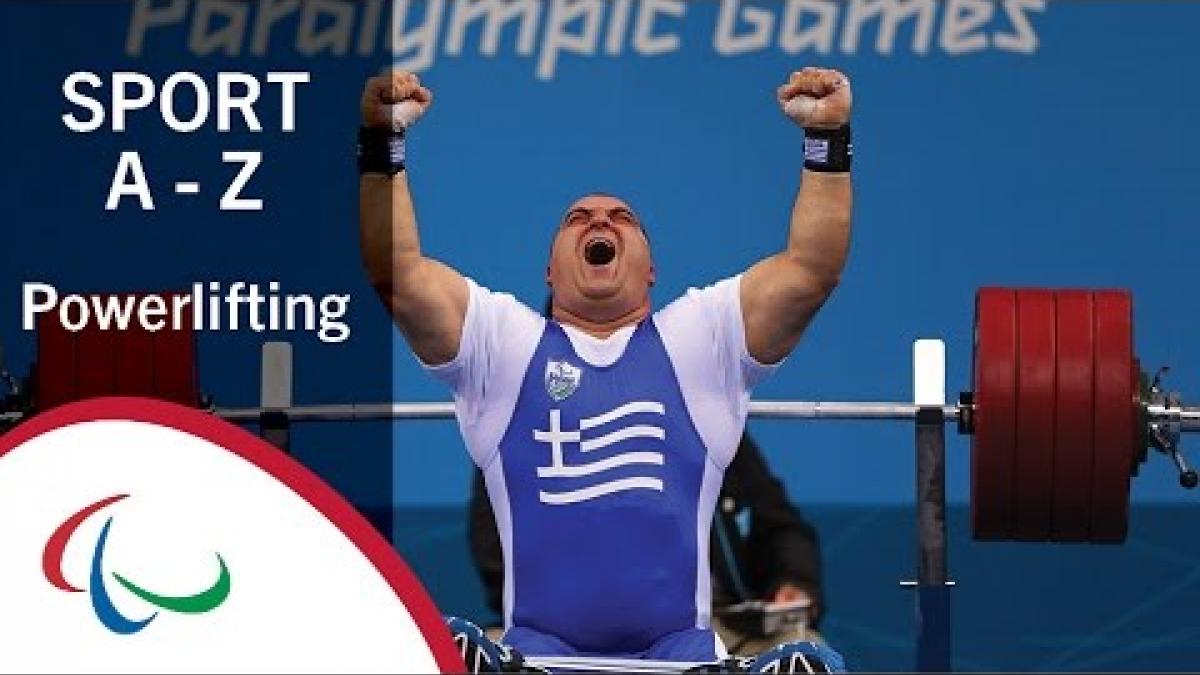Sport Week: History of Para powerlifting
Weightlifting was originally on the Paralympic programme, but changed to powerlifting in 1992. 23 Jun 2016
Nazmiye Muslu of Turkey competes on her way to setting a new world record and winning gold in the women's -40kg competition at the London 2012 Paralympic Games.
Some form of lifting weights has been on the Paralympic programme since the Tokyo 1964 Paralympic Games.
But it has not always been powerlifting as we know it today – one of the most impressive sports spectators can see at the Paralympics.
In 1964, ‘weightlifting’ made its debut and featured just men with spinal cord injuries.
Over the following years the sport started to include other impairment groups and incorporate rules identical to those of powerlifting for able-bodied athletes.
By the time of the Barcelona 1992 Paralympics it was decided that powerlifting should officially replace weightlifting. Those Games saw athletes from 25 countries compete for medals in 10 events.
The lightest weight category was the men’s up to 48kg, whilst the heaviest was the men’s over 100kg.
This endured until Sydney 2000 when 10 medal events for women were added to the programme. Here the lightest weight category for women was the up to 40kg and the heaviest the over 82.5kg. By this time the sport had expanded its reach over five continents.
Very little changed in the structure of the competition over the following 12 years until after London 2012, where nearly 200 Para powerlifters competed.
In 2013, in time for the IPC Powerlifting European Open Championships in Alexin, Russia, a change in the weight classes was confirmed.
It followed an extensive review of all bodyweight category trends across major competitions, resulting in the same number of medal events but a different range of weights.
Now the men’s begin at up to 49kg, expanding to over 107kg. The women’s begin at the up to 41kg and the heavyweights compete in the over 86kg.
This system has been used successfully at all regional and World Championships since London 2012, and will make its debut at Rio 2016.
In recent years powerlifting has also created some of the big name stars in Para sport. This includes Iran’s Siamand Rahman, dubbed the ‘world’s strongest Paralympian,’ who currently holds the world record in the men’s over 107kg at 296kg.
On the women’s side, Mexico’s Amalia Perez is a double Paralympic champion from Beijing 2008 and London 2012. She is also the reigning world champion in the women’s up to 61kg.
Editor’s note: Each sport on the Rio 2016 Paralympic programme will have a dedicated week of featured content published on paralympic.org. Every week a new sport will be featured and the series will run until September’s Games, helping the public understand more about the 22 sports being contested in Rio.
__
Sport fans from around the world can now buy their Paralympic tickets for Rio 2016 from authorised ticket resellers (ATRs)
The IPC’s Global ATR is Jet Set Sports, and Rio 2016 tickets and packages can be purchased on the CoSport website.
Residents of Brazil can buy 2016 Paralympics tickets directly from the Rio 2016 website.

 Facebook
Facebook
 Instagram
Instagram
 Twitter
Twitter
 Youtube
Youtube





